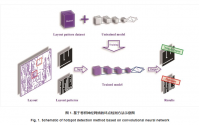Zhejiang starshine semi was formed in January 2022 with the goal of developing RF front end filter & module technology. SAW & BAW filters, duplexers & such
In April, signed deal to produce 120k wafers per year of 5G wafers
With recent news, it seems like things are coming together all along 5G. I think they might end up going from having little presence on upstream supply chain to dominating upstream supply chain in a short time, because they are the downstream companies & cutting off raw materials to upstream suppliers. And they are building up production quickly with many companies at the same time.
In April, signed deal to produce 120k wafers per year of 5G wafers
With recent news, it seems like things are coming together all along 5G. I think they might end up going from having little presence on upstream supply chain to dominating upstream supply chain in a short time, because they are the downstream companies & cutting off raw materials to upstream suppliers. And they are building up production quickly with many companies at the same time.


